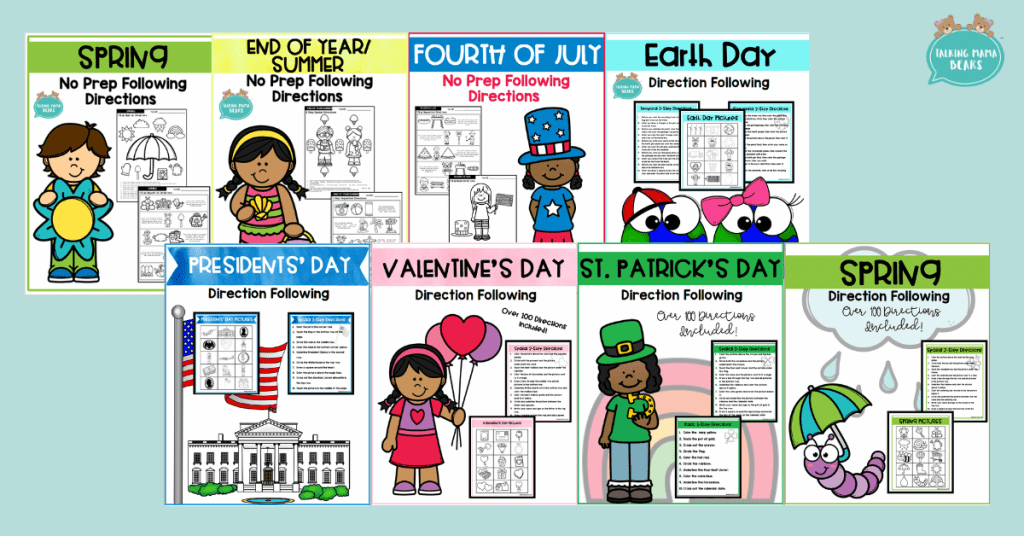This post may contain affiliate links, meaning we get a commission at no cost to you if you decide to make a purchase. As an Amazon Associate, we earn a small commission on qualifying purchases.
Do you have a child or student that struggles with direction following? Do you have a child or student that requires multiple repetitions of verbal direction? Do you have a child or student that forgets portions of verbal directions?
We know repeating directions can be very frustrating and concerning as a parent! And as SLPs, directions are something we see students struggle with in classrooms everyday. Let’s dive head first into the crazy world that is auditory directions, why this skill is so important, and how you can help your child or student improve their direction following.
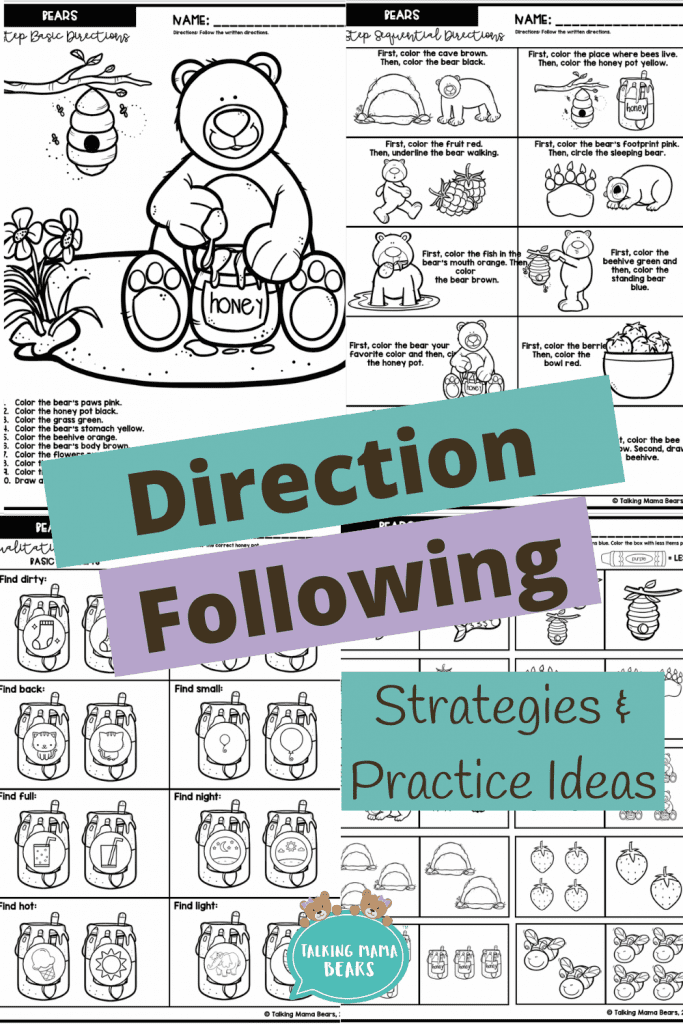
Want some FREE tips, tricks, and products to help target speech and language skills at home and in your speech room? Join our FREE resource library today and gain access to our growing collection of freebies! We will even send you an email so you don’t miss when we add a new product or blog post!
What is an auditory direction?
An auditory direction is a verbal statement a child hears and then must complete. This could be a request to get an item or initiate a task. Most verbally given directions contain many language concepts such as:
- Basic – colors, numbers, descriptors, etc.
- “Please go get your red backpack and three library books.”
- Spatial – under, over, next to, between, etc.
- “Sit in the desk between Conor and Ayla.”
- Sequential – first, second, last, etc.
- “First hand in your homework, then line up for recess.”
- Temporal – before, after
- “After you finish your test, be sure to grab the next assignment.”
- Conditional – If, then
- “If it rains tomorrow, then you will need to bring an extra pair of socks.”
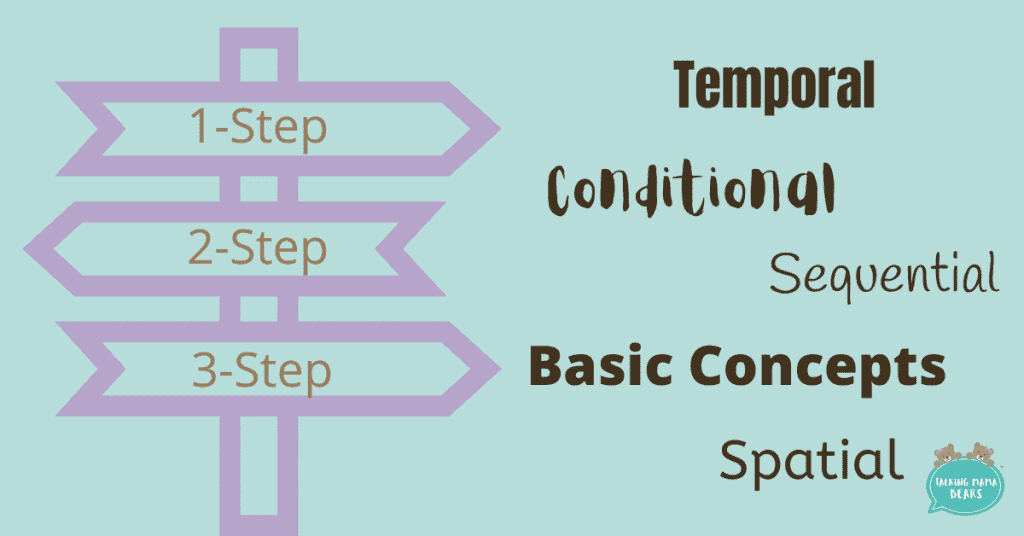
Why is direction following important?
Direction following is important because so much of our everyday lives consists of hearing auditory information and then acting on that information. Our world is language based which requires children to listen and apply directions many, many times a day. If a child struggles with understanding language concepts, asking them to follow multi-step directions containing those concepts is going to be an even bigger struggle.
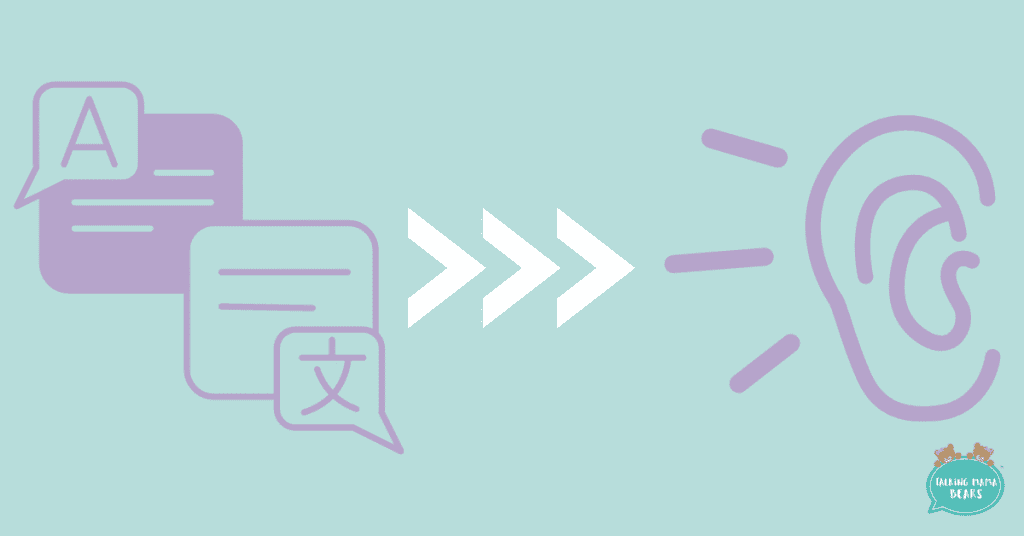
How to help improve direction following?
So we are guessing most of what has been described above is completely relatable when it comes to your child and how they complete directions throughout their day. We get it. It is tough! Keep reading to see how you can help alleviate some of the load on both you and your child!
Clarifying Directions
Sometimes directions can just be super wordy and confusing. If you child is struggling with lengthy verbal directions, try restating the direction is a simpler format. You can even state multistep directions as shorter one-step directions.
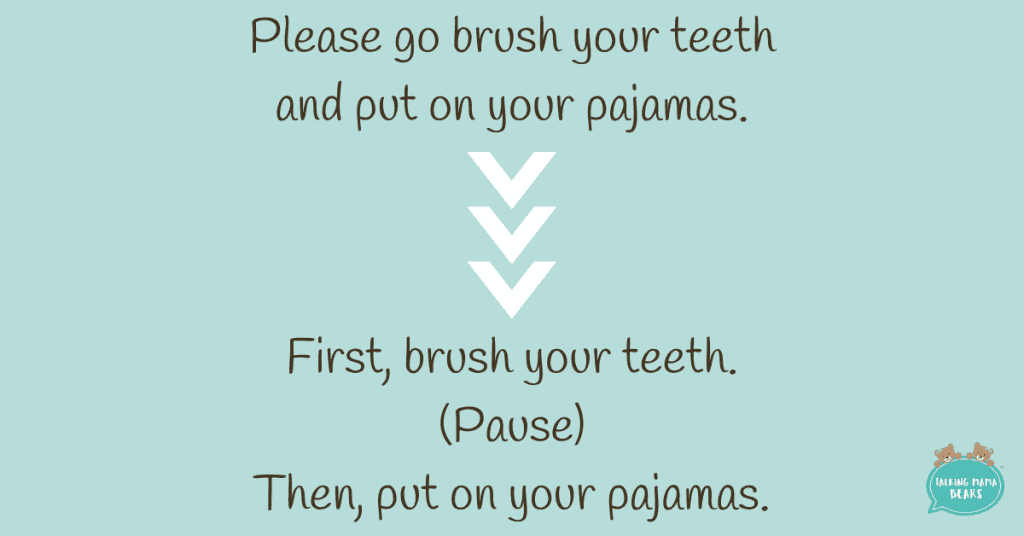
Pairing with Visuals
Some children are not auditory learners and learn better visually. And that’s ok! If that is the case, pair auditory directions with visuals to help reinforce concepts and strength the overall message.

Eliminate Background Distractions
We realize this isn’t always possible. (We both have small children and dogs running around our homes at all times so we totally get it!). However when background noises and distractions can be limited, children may be able to focus more on the major auditory input source…the verbal direction.

Repeat the Direction Back
Another great way to help children improve their ability to follow directions is to have them repeat the direction back to you. This will help them hear the direction again in a more meaningful way, but also help you know what they are struggling with if they are unable to repeat portions.

Practice, practice, practice!
Practicing direction following can improve by, you guessed it, direction following! This is especially true if your child struggles with the embedded language concepts within those directions as explained above. Learning more vocabulary will ultimately help your child feel more confident and successful when given a multi-step direction.
Check out our FREEBIE No Prep Direction Following activity that includes basic, spatial, and sequential concepts as well as qualitative and quantitative vocabulary all paired with visuals! Join our email list today to gain access to this direction following FREEBIE and other free resources only available only on our website.
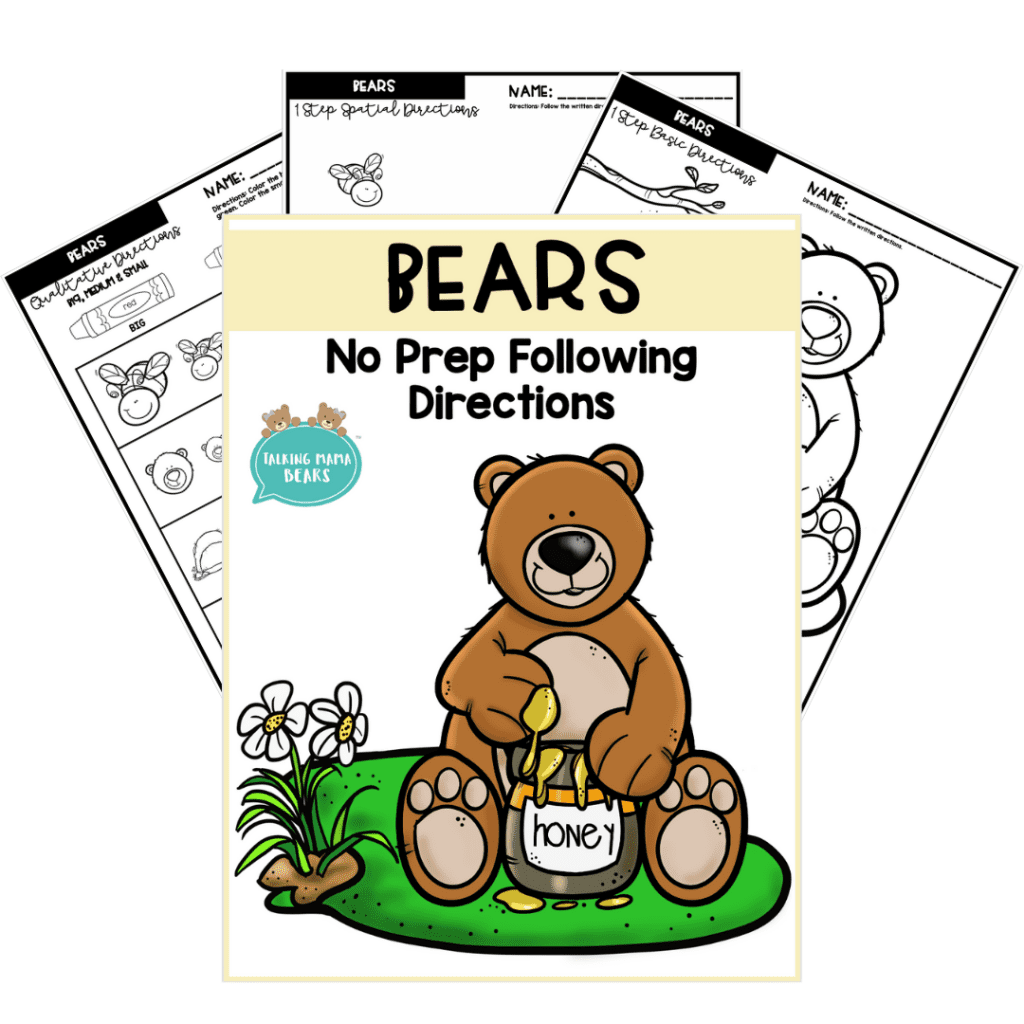
If you are looking for more direction following activities, we have many themed products that do just that. Click here to purchase a variety of different worksheets that pair visuals, simplify directions, and make practicing fun to help your child improve their auditory skills. There are several seasonal versions of our Direction Following with Qualitative & Quantitative Concepts as well as our Direction Following with Embedded Concepts. Be sure to check them all out on our TPT Store!
If you still have questions regarding your child’s ability to follow directions, please know there can be many reasons for this difficulty. While practicing at home is extremely helpful, the best way to be sure your child is targeting the correct skills is to contact a licensed speech-language pathologist. An SLP can formally evaluate and provide specific interventions to help your child with any underlying speech and language deficits including direction following. For more information, click here!
We hope you found this post helpful and are feeling a little more equipped to help your child practice direction following at home. If you are an SLP, we hope you are able to use our Freebie No Prep Directions to help target direction following during your sessions.
Find success using one of the strategies we reviewed either at home or in the speech room? Drop us a note in the comment section below. We would love to celebrate with you!
Happy direction following, fellow SLPs & mamas!
Talking Mama Bears
